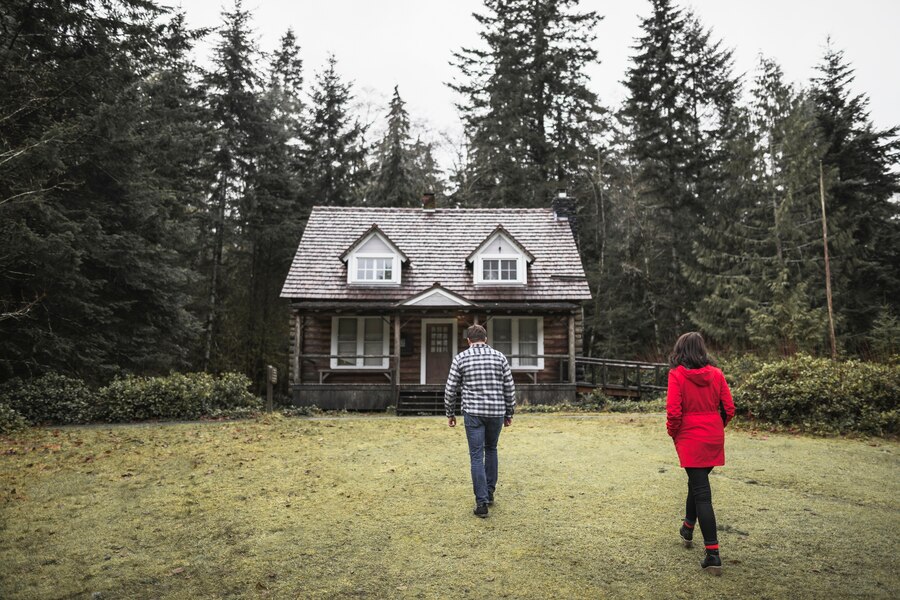Embarking on a tiny house building journey is an exciting and transformative process. Whether you’re motivated by the desire for minimalism, eco-friendliness, or financial freedom, constructing a tiny home can be a deeply rewarding experience. However, this journey is not without its challenges. Every step requires careful planning and thought, from navigating building codes to selecting materials. We will explore key aspects you should expect when building a tiny house, from design choices to the construction process. Ultimately, the journey creates a living space tailored to your needs and lifestyle.
Planning Your Tiny House: Layout and Legal Considerations
The planning phase of building your tiny home is crucial, as it sets the tone for the entire project. One of the first things to consider is your layout. Since tiny homes offer limited space, efficient use of every square foot is vital. Start by making a list of your priorities. Do you want a loft bed to maximize living room space? Or would you prefer a ground-level sleeping area for easier access? Your daily habits will help dictate the layout, ensuring your home suits your lifestyle. Storage is another critical component to plan for. Incorporating built-in cabinets, shelving, and multi-functional furniture can maximize the available space.
In addition to the layout, you’ll need to understand the legal considerations of tiny house construction. This involves researching local building codes, zoning laws, and regulations in the area where you plan to park or build your tiny home. Many municipalities restrict dwelling sizes, so be prepared to check if your area allows tiny homes on wheels or as permanent structures. If your home is on wheels, you may also need to follow specific road safety regulations, such as size limits and towing rules. Knowing these details will save you from headaches later in the project.
The Building Process: Materials, Costs, and Timeline
You’re ready to dive into the construction phase once you’ve mapped out your design and addressed the legalities. One of the biggest decisions you’ll face is selecting the right materials for your tiny home. The materials you choose will impact not only the appearance and durability of your house but also its overall weight and sustainability. For instance, using reclaimed or eco-friendly materials can align with a minimalistic, eco-conscious ethos, while choosing lightweight materials can help if your tiny house is on wheels. Popular choices include wood, metal, and composite materials, but each has pros and cons, including insulation properties, cost, and ease of maintenance.
Budgeting is another major factor to consider during this phase. Building a tiny home is generally more affordable than a conventional home, but costs can still add up depending on your materials, appliances, and finishes. Creating a budget and sticking to it as closely as possible is essential. Consider unexpected expenses such as permits, specialized tools, or labor if hiring professionals. DIY builds can save you money, but only if you have the time, skills, and resources to complete the project efficiently.
The timeline for building a tiny home can also vary widely. Some builds can be completed in months, while others may take a year or more, particularly if you work on weekends or after hours. Weather, sourcing of materials, and your experience level can all influence the time it takes to finish the project. Managing your time effectively and setting realistic milestones will help keep the project on track.
Dealing with Challenges: Common Hurdles and How to Overcome Them
Throughout your tiny house building journey, you will encounter obstacles that test your patience and determination. One common challenge is working within such a small space, which can make installing utilities like plumbing, electricity, and HVAC systems difficult. These systems are essential for comfort, and if you’re unfamiliar with them, hiring professionals may be necessary. However, with some research and trial and error, you can still make these installations work in your favor. Off-grid solutions, such as composting toilets and solar panels, can provide greater flexibility if your tiny house is designed to move frequently or be placed in remote areas.
Another hurdle that builders often need help with is securing financing. Since tiny homes are not yet widely recognized by traditional lenders, obtaining a mortgage or loan can be tricky. Many prospective tiny homeowners choose alternative financing options like personal loans, RV loans, or crowdfunding campaigns. Remember that any loan or financing will increase the overall cost of your tiny house project, so it’s important to weigh the benefits and drawbacks of each option carefully.
Building a tiny house is a rewarding but complex process with unique challenges and opportunities. From planning the layout and dealing with legalities to navigating the construction process and customizing your space, there is much to consider along the way. We have explored how each journey stage offers its rewards, from the thrill of completing construction to the satisfaction of living in a space designed entirely around your needs. By preparing for the challenges ahead, you can create a tiny home that reflects your values and lifestyle, offering you a sense of freedom and fulfillment in minimalist living.










